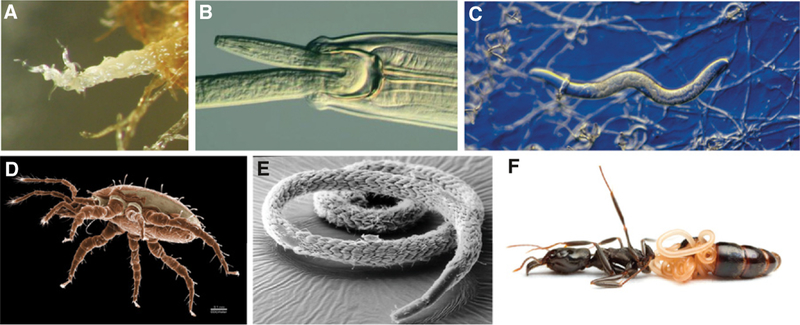Figure 3.
Nematode interactions.
(A) Dauer larvae of a Caenorhabditis species from rotten fruit congregate in bundles and wave. This behavior is thought to facilitate contact with a larger animal that can carry the nematodes to a new habitat. The dauer larva is the evolutionary precursor of the infective larva of parasitic species in the clade Rhabditida. (B-D) Predators of nematodes: (B) the mononchid nematode Anatonchus tridentatus feeds on another nematode (photo by R. Neilson, The James Hutton Institute, UK), (C) the nematode-trapping fungus Arthrobotrys conoides has ensnared a nematode with adhesive rings (photo by W.R. West, ©Carolina Biological Supply Company, used by permission) and (D) Macrocheles sp., a nematophagous mesostigmatid mite (photo D.E. Walter). (E) Mutualistic bacteria cover the surface of the stilbonematid Eubostrichus parasitiferus (reproduced with permission from J. Ott and Wiley, from the cover of Volume 23, Issue 2 of Biologie in unserer Zeit). (F) A parasitic mermithid nematode in the abdomen of a trap-jaw ant from Belize (photo from ©Alex Wild, used by permission).

